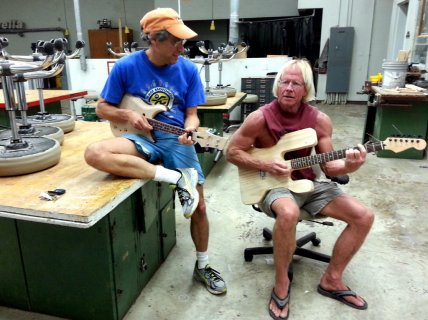Hi folks, I am new to the forum and new to Teensy. I came across this forum because I've been looking for a way to make a midi controller version of this "Time traveling guitar" rocker device that I've been working on for the past couple years. Here's a video of an early version of it (which ended up getting quite a bit of attention, and got me a pretty sweet job!)
So I've been looking around for info on building homemade midi controllers, but all I can find are these tutorials that have way more information than I need. I am building what is essentially a midi controller with only two buttons, and I just need to know how to do the wiring. Could someone help me with that, and perhaps let me know if Teensy is a good fit for my project? Thanks!
So I've been looking around for info on building homemade midi controllers, but all I can find are these tutorials that have way more information than I need. I am building what is essentially a midi controller with only two buttons, and I just need to know how to do the wiring. Could someone help me with that, and perhaps let me know if Teensy is a good fit for my project? Thanks!



